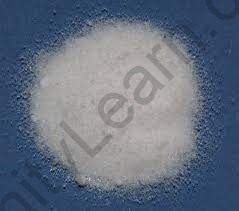Table of Contents

Soluble salts are ionic compounds that dissociate their components during their contact with a solvent, resulting in a solution with at least 0.1 moles per litre concentration at room temperature. They are formed as a result of acidic processes.
- Salt is soluble when the energy created by the ions’ contact with the solvent molecules is capable of breaking the ionic bonds in the salt as well as separating the solvent molecules, allowing the ions to freely insert to form a solution. They can be found in the soil and in bodies of water.
- The majority of chlorides, nitrates, and sulfates—calcium, magnesium, sodium, and so on—are soluble salts. When their threshold value is surpassed, these corrosion chemicals are major contributors to early coating or painting failures, as well as corrosion beneath the insulation. They are present at the surface as a result of atmospheric pollution and surface preparation processes. Because any substrate’s surface comprises pits, the presence of these salts in the pits makes them difficult to eradicate.
- The compounds are likely to be unnoticed during surface preparation. The presence of these corrosive elements under a coating provides corrosion-friendly circumstances, such as dampness. Corrosion occurs as a result of the osmotic pull of water molecules through coatings or insulations, resulting in under-film metallic rusting.
- As they lower the pH, more oxygen is consumed and air moisture is pulled onto the substrate’s surface. They also have low electrical resistance, resulting in corrosion cells. This is one of the most significant causes of steel corrosion. Chemically active acids and salt removers are commonly employed in blasting and brushing processes prior to applying any coating or insulation. The coating thickness can also limit the influence of soluble salts.
- A dissolving process occurs when an ionic crystal, such as salt or sugar, is put in water. Initially, the crystal’s positive and negative ions are exclusively attracted to one other. The molecules of hydrogen in the crystal are connected to one another. These hydrogen bonds must be destroyed if the crystal is to disintegrate.
- The positive sodium ions are attracted by both the chloride ions and the partly negative oxygen atoms in the water molecules during the dissolving process. Which attracting force is stronger determines whether a salt crystal dissolves or not. A crystal will not disintegrate while its internal ionic forces are at their highest. If the water molecules’ affinities to the ions are the greatest, the crystal will disintegrate.
- Electrical conductivity is used to measure soluble salts in irrigation water (EC). The higher the salt concentration, the higher the EC. In general, EC values greater than 2.0 are thought to be hazardous to plants.
- Water quality should be examined on a regular basis to avoid difficulties caused by soluble salts.
FAQs
What exactly are soluble salts in soil?
Calcium, magnesium, sodium, chloride, sulfate, and bicarbonate are typical soluble salts found in soils. Potassium, ammonium, nitrate, and carbonate are all present, but in lower amounts.
What are some soluble salt examples?
Sodium chloride (NaCl), potassium chloride (KCl), magnesium chloride (MgCl2), and sodium sulfate (Na2SO4) are examples of soluble salts.




